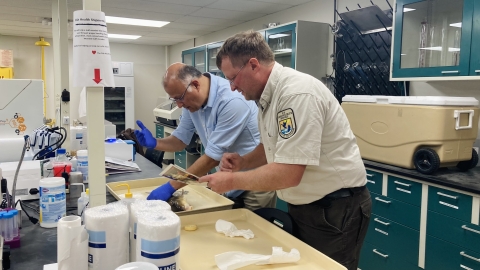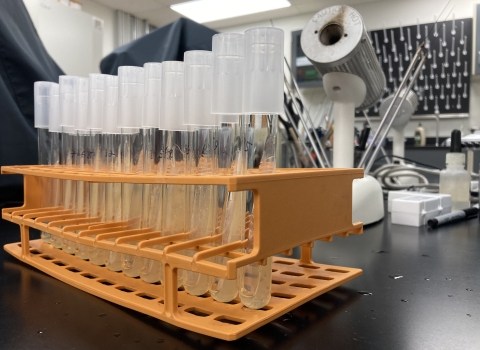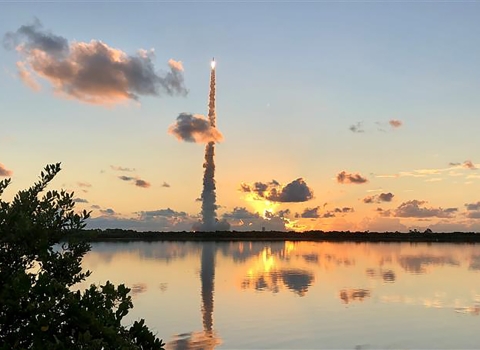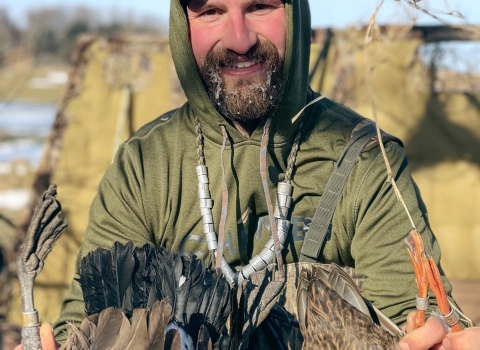Imagine having the opportunity to work alongside the leading experts in your field.
La Crosse Fish Health Center (FHC) biologists, Jennifer Bailey and Eric Leis, got that opportunity as experts in parasitology, Dr. Anindo Choudhury from St. Norbert College, Wisconsin, and Dr. Tomáš Scholz from the Institute of Parasitology (Czech Academy of Sciences) in the Czech Republic visited the La Crosse FHC this month. The collaboration supported the current research of the two distinguished scientists and helped shed new light on past collections from the same water bodies.
Parasites in fish are indicators of a bigger picture
Nearly twenty years ago, Dr. Choudhury had advised Bailey’s work on catostomid (sucker family) parasites from the Mississippi and Missouri rivers as a member of her master’s thesis committee. Parasites are indicators of the health of aquatic environments. They require different hosts as they move through their life cycle. If you have diversity of parasites, you have a biodiverse system because of the wide variety of hosts they need. The Mississippi river sustains more fish species than any other temperate river in the world, so you would expect that its parasites would be as diverse as the species of fish. The collaborative findings of this group have shown that there is, in fact, incredible diversity in the parasite fauna, and there is more work yet to be accomplished. Results from that thesis, and more questions to answer have allowed the two to stay in touch and continue research over the years.
Dr. Scholz, one of the most respected tapeworm specialists in the world, happened to be working in the Choudhury lab this fall and coincidentally also is from the same institute in the Czech Republic where researchers visited the La Crosse FHC earlier this summer. A rather fortuitous set of emails set in motion plans to get together in La Crosse to reexamine the parasites of catostomids.
Building on the foundation of previous research
More samples were collected from the Wisconsin Department of Natural Resources and the La Crosse Fish and Wildlife Conservation Office, and new research tools were enlisted. Using DNA sequencing to compliment the morphological and taxonomic work done previously, the collaborating parasitologists (Dr. Choudhury and Dr. Scholz) hope to bring light to the relatedness of parasites found in the Mississippi river to those found in Europe and confirm the findings of new species. To have the world experts in your lab to exchange information about techniques, morphology, and biology of parasites was an invaluable experience. The partnerships built and information gained will surely elevate the ability of the center to conserve and protect fish and aquatic species in the future.




